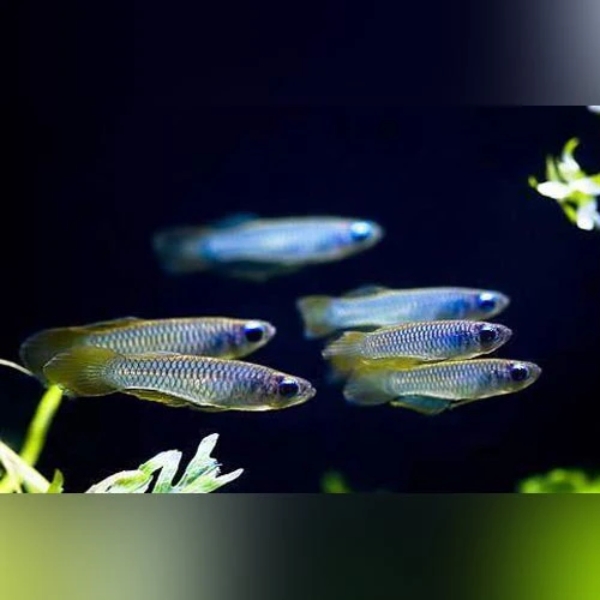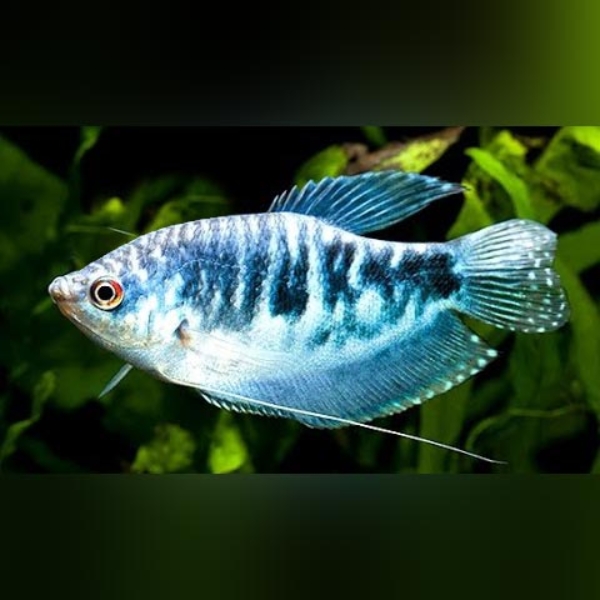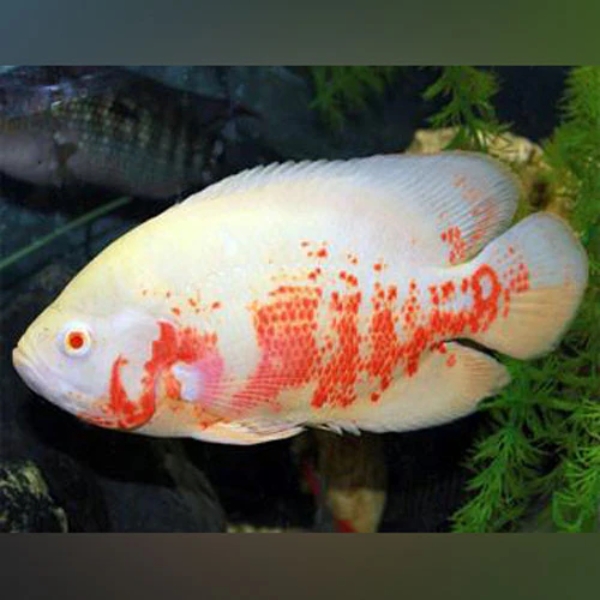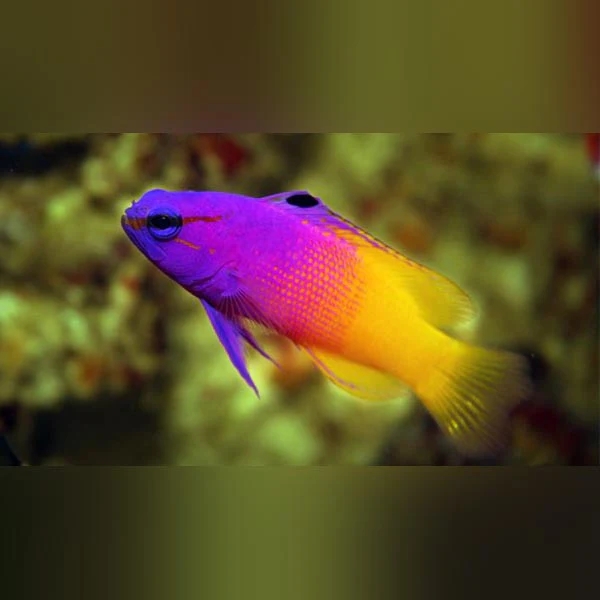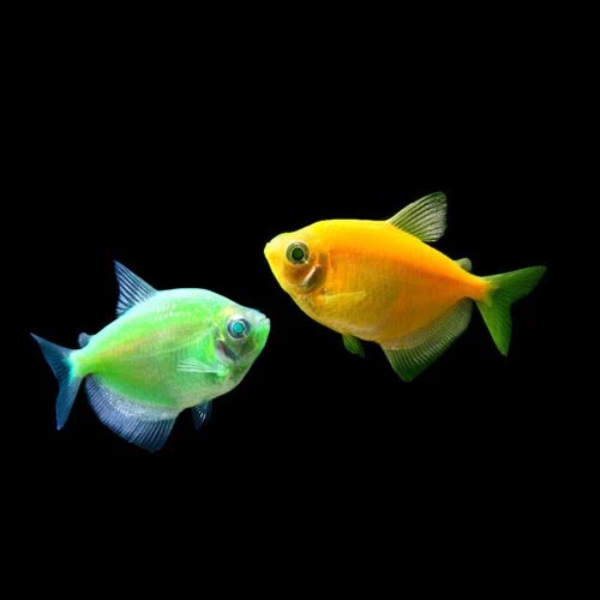If you’re searching for a unique and mesmerizing addition to your tank, look no further than Norman’s Lampeye Killifish. This small, shimmering fish is known for the striking light-blue “lampeyes” that seem to glow under proper lighting. Native to West Africa, these peaceful fish have won the hearts of aquarium enthusiasts for their ease of care, social behavior, and undeniable beauty. In this article, we’ll dive into everything you need to know about caring for Norman’s Lampeye Killifish, from their features to tank setup, diet, and more.
Norman’s Lampeye Killifish may be small, but they pack a big visual punch in any aquarium. Their gleaming, reflective eyes capture the light in such a way that they almost look like miniature flashlights darting around your tank. If you’re interested in fishkeeping or simply want to add a touch of elegance to your aquarium, the Norman’s Lampeye Killifish is a fantastic choice. In this article, we’ll explore their fascinating features, behavior, and the best ways to care for them.
Table of Contents
ToggleNorman’s Lampeye Killifish Feature
Appearance
One of the most captivating aspects of Norman’s Lampeye Killifish is their glowing eyes. These “lampeyes” are reflective and often appear to light up under the right conditions. The fish itself is relatively small, with translucent to silvery bodies, allowing the bright blue of their eyes to stand out even more. Males may show slightly brighter coloring than females, especially during breeding.
Size and Growth
While Norman’s Lampeye Killifish remain small throughout their lives, they can grow up to about 1.5 inches (4 cm) in length. Their compact size makes them perfect for nano tanks or community aquariums. Despite their small size, they are quite active, so they do require ample swimming space to remain happy and healthy.
Unique Characteristics
Apart from their glowing eyes, these fish are known for their calm and peaceful demeanor. Unlike more aggressive species, Norman’s Lampeye Killifish are content to coexist with others without causing trouble. Their gentle nature makes them an excellent choice for both beginners and experienced aquarists.
Natural Habitat and Origins
Norman’s Lampeye Killifish are native to the slow-moving streams and swamps of West Africa, primarily in areas like Nigeria and Cameroon. In the wild, they thrive in shaded environments with soft, acidic water, often filled with plants and leaf litter. Their natural habitat gives insight into how to replicate their ideal living conditions in an aquarium, ensuring they stay healthy and comfortable.
Ideal Tank Setup for Norman’s Lampeye Killifish
Tank Size
Although these fish are small, they do best when kept in groups. A 10-gallon tank is the minimum recommended size for a school of Norman’s Lampeye Killifish, but a larger tank of around 20 gallons is ideal if you plan on adding other species or keeping a bigger group.
Water Parameters
Maintaining the right water conditions is essential for the well-being of Norman’s Lampeye Killifish. They prefer soft, slightly acidic water with a pH range of 6.0 to 7.0. The ideal temperature for these fish is between 72°F and 79°F (22°C to 26°C). Using a heater and pH testing kit will help keep the water parameters stable and conducive to their health.
Substrate and Decorations
Norman’s Lampeye Killifish appreciate a tank that mimics their natural environment. A dark substrate, such as fine sand or gravel, will help showcase their glowing eyes. Live plants, such as Java moss and Anubias, provide shelter and make the fish feel secure. Floating plants are also a good addition, as these fish prefer dim lighting and enjoy hiding near the water’s surface.
Diet and Feeding Requirements
In the wild, Norman’s Lampeye Killifish primarily feed on small insects and plankton. In captivity, they thrive on a varied diet. A high-quality flake or micro-pellet food should form the base of their diet, but it’s important to supplement this with live or frozen foods like brine shrimp, daphnia, or bloodworms. Feeding them twice a day in small portions is recommended, ensuring they eat everything within a few minutes to avoid overfeeding and waste buildup.
Behavior and Social Traits of Norman’s Lampeye Killifish
Schooling Behavior
Norman’s Lampeye Killifish are natural schoolers, meaning they are happiest when kept in groups of six or more. Schooling helps reduce stress, encourages natural behaviors, and creates a visually stunning display as the fish dart around together. Keeping them in small groups can lead to stress and a lack of activity, so it’s best to house them with plenty of companions.
Compatibility with Other Fish
Thanks to their peaceful nature, Norman’s Lampeye Killifish make excellent tank mates for other peaceful species. They can coexist with small tetras, rasboras, and dwarf corydoras. However, avoid housing them with large or aggressive fish that may bully or even prey on them. It’s also crucial to ensure that their tank mates share similar water parameter preferences to maintain a harmonious environment.
Health and Common Diseases
While generally hardy, Norman’s Lampeye Killifish can be susceptible to common freshwater diseases like Ich and fin rot. These issues often arise due to poor water quality or sudden changes in conditions. Regular water changes, careful monitoring, and quarantining new fish before introducing them to your tank can help prevent diseases from spreading. Early detection and treatment are key to ensuring a quick recovery.
Breeding Tips for Norman’s Lampeye Killifish
Breeding Norman’s Lampeye Killifish can be rewarding, though it requires some preparation. These fish are egg layers, and spawning typically occurs in tanks with soft water and plenty of fine-leaved plants where the eggs can be safely deposited. Once breeding has occurred, it’s best to remove the adults to prevent them from eating the eggs. After about a week, the eggs hatch into tiny fry, which can be fed infusoria or other small foods until they are large enough to eat regular fare.
Water Maintenance Best Practices
Proper water maintenance is crucial for the health of your Norman’s Lampeye Killifish. Weekly water changes of about 20% help keep the water clean and free from harmful toxins like ammonia and nitrites. Using a good filtration system is essential, but make sure the water flow isn’t too strong, as these fish prefer gentler currents. Regularly testing the water parameters is a good habit to ensure everything remains stable and suitable for your fish.
Caring for Norman’s Lampeye Killifish
Daily Care
Caring for Norman’s Lampeye Killifish is relatively easy once their tank is properly set up. Daily tasks include feeding them twice a day, checking the water temperature and condition, and ensuring all equipment (like filters and heaters) is functioning correctly. These fish thrive in clean, well-maintained tanks, so don’t skip your weekly maintenance routines.
Recognizing Stress and Illness
Signs of stress or illness in Norman’s Lampeye Killifish include lethargy, loss of appetite, faded coloration, and unusual swimming behavior. If you notice any of these symptoms, it’s important to test the water parameters and address any potential issues. Isolating sick fish in a quarantine tank can prevent the spread of disease and allow for targeted treatment.
Conclusion
Adding Norman’s Lampeye Killifish to your aquarium is like introducing a school of living gemstones to your underwater world. Their glowing eyes and peaceful nature make them the perfect addition for hobbyists of all levels. With the right care, environment, and attention to their needs, these little fish will thrive and bring a touch of shimmering beauty to your home. Whether you’re a seasoned fishkeeper or just starting out, Norman’s Lampeye Killifish will undoubtedly become one of your favorites.
Related products
Aquarium fishes
Aquarium fishes
Aquarium fishes
Aquarium fishes
Aquarium fishes

